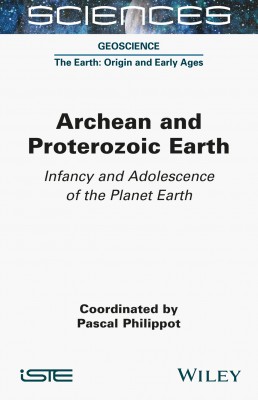
It took nearly four billion years for the Earth to become a hospitable planet.
Archean and Proterozoic Earth traces the geodynamic, biological, climatic and environmental upheavals that accompanied this evolution.
This book looks at the planet’s secular cooling and its implications for the dynamics of the Earth’s mantle and the development of plate tectonics, as well as the evolution of magma composition and the formation of a differentiated continental crust. It shows how variations in the intensity of the Earth’s magnetic field have proved useful in reconstructing the movement of continents across the surface of the globe. The book also documents the origin of the oceans and the appearance of the first traces of life and describes the evolution of the major biogeochemical cycles that led to the oxygenation of the atmosphere, the diversification of living organisms and the concentration of substances of economic interest, particularly metals.
1. Thermal Evolution of the Earth, Stéphane Labrosse.
2. Dynamics of the Mantle, Lithosphere, and Crust in the Archean, Patrice Rey, Nicolas Coltice.
3. Precambrian Magnetic Field and Paleogeographic Reconstructions, Julie Carlut, Mélina Macouin.
4. Archean Magmatism, Jean-François Moyen.
5. Temperature and Chemical Composition of Precambrian Oceans, Johanna Marin-Carbonne, Christophe Thomazo.
6. Oxygenation of the Atmosphere, Pascal Philippot, Pierre Sans-Jofre.
7. Carbon, Sulfur and Iron Biogeochemical Cycles, Magali Ader, Vincent Busigny, Christophe Thomazo.
8. Origins of Life and the Fossil Record, Sylvain Bernard.
9. Mineral Deposits: Au, U, Fe-Mn, Michel Lopez.
Pascal Philippot works as CNRS Research Director at Géosciences Montpellier, France. His research interests include the relationships between geodynamics and biogeochemical cycles during the Precambrian, and in particular, the processes that led to the oxygenation of the atmosphere and oceans during the Archean–Proterozoic transition.